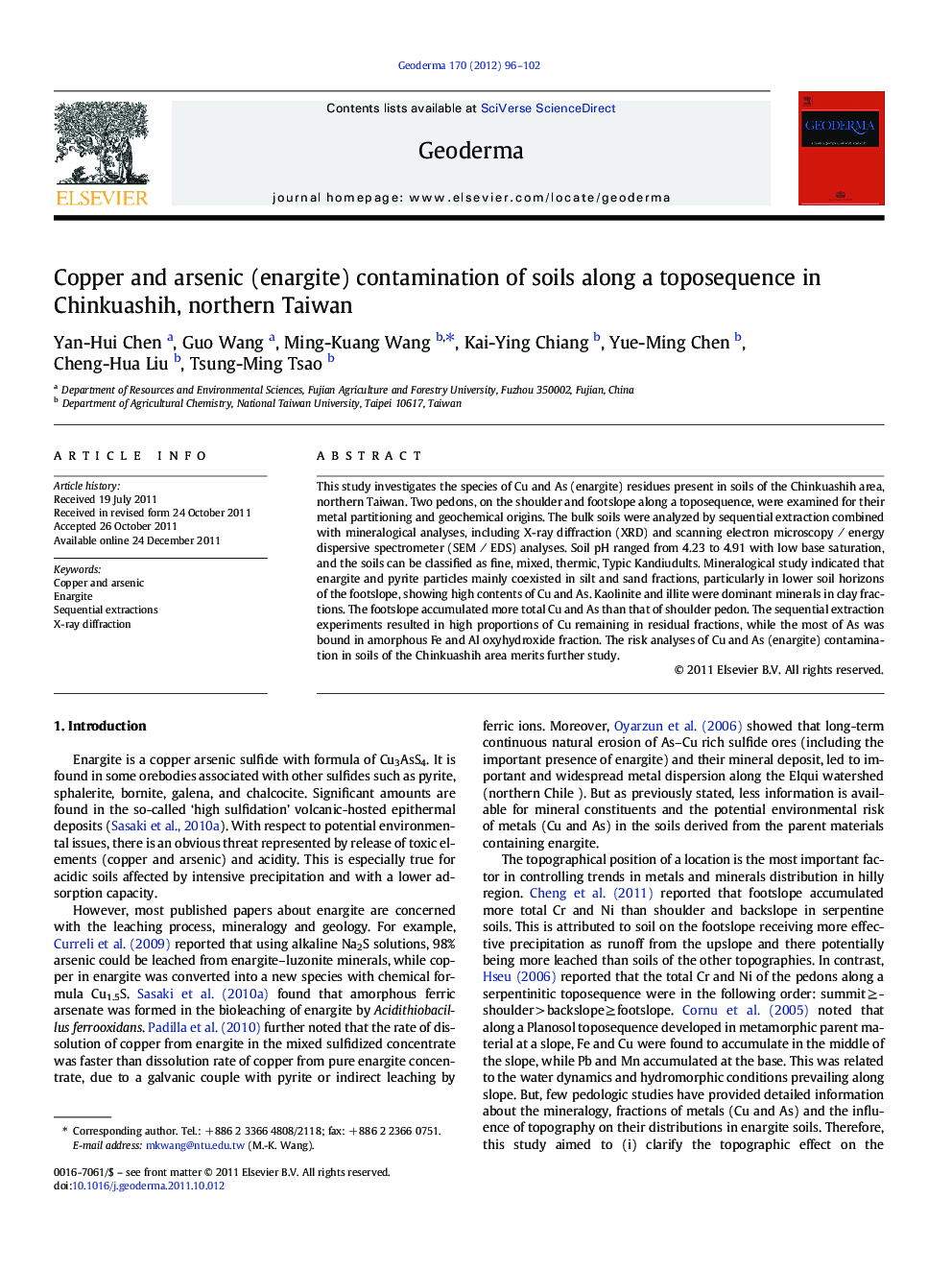| Article ID | Journal | Published Year | Pages | File Type |
|---|---|---|---|---|
| 4573891 | Geoderma | 2012 | 7 Pages |
This study investigates the species of Cu and As (enargite) residues present in soils of the Chinkuashih area, northern Taiwan. Two pedons, on the shoulder and footslope along a toposequence, were examined for their metal partitioning and geochemical origins. The bulk soils were analyzed by sequential extraction combined with mineralogical analyses, including X-ray diffraction (XRD) and scanning electron microscopy ∕ energy dispersive spectrometer (SEM ∕ EDS) analyses. Soil pH ranged from 4.23 to 4.91 with low base saturation, and the soils can be classified as fine, mixed, thermic, Typic Kandiudults. Mineralogical study indicated that enargite and pyrite particles mainly coexisted in silt and sand fractions, particularly in lower soil horizons of the footslope, showing high contents of Cu and As. Kaolinite and illite were dominant minerals in clay fractions. The footslope accumulated more total Cu and As than that of shoulder pedon. The sequential extraction experiments resulted in high proportions of Cu remaining in residual fractions, while the most of As was bound in amorphous Fe and Al oxyhydroxide fraction. The risk analyses of Cu and As (enargite) contamination in soils of the Chinkuashih area merits further study.
► Enargite mainly existed in silt and sand, especially in lower horizons of footslope. ► Kaolinite and illite were the dominant minerals in clay fractions. ► The footslope accumulated more total Cu and As than the shoulder pedon. ► Most of Cu remaining in residue, while As bound to Fe and Al oxyhydroxide.
